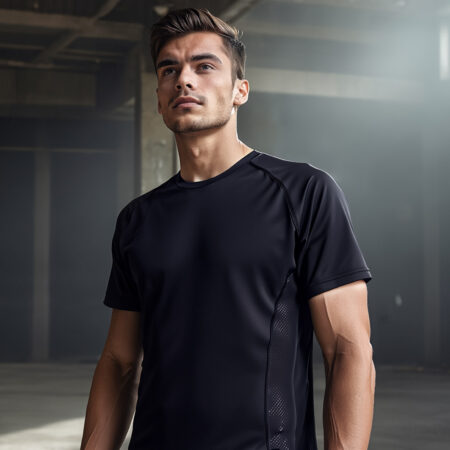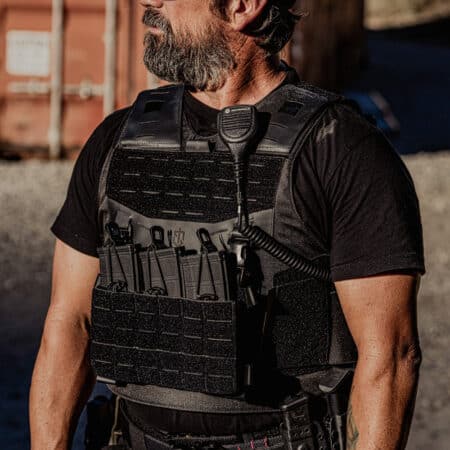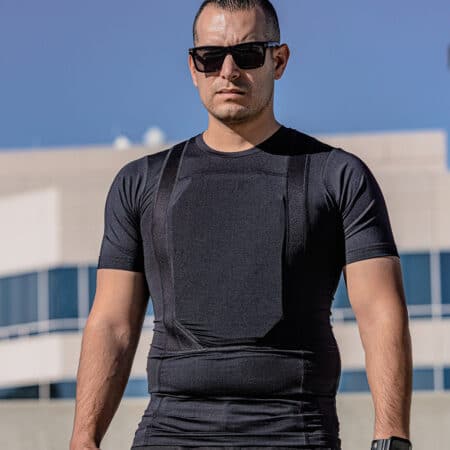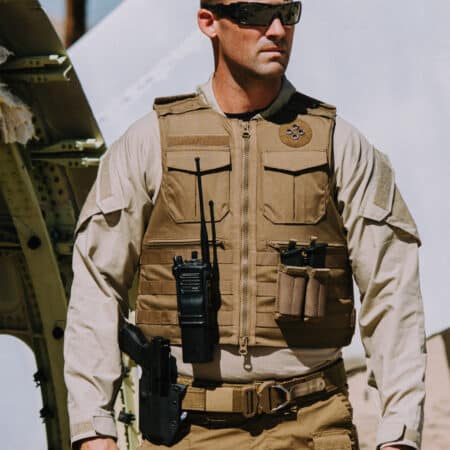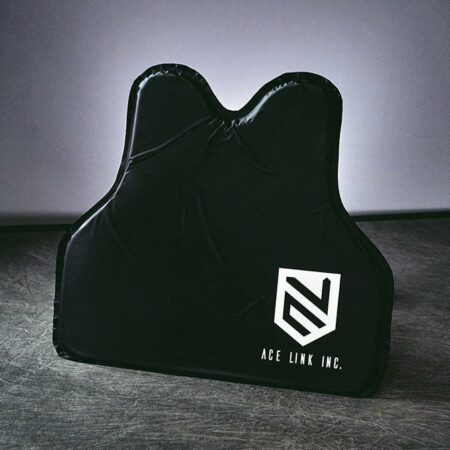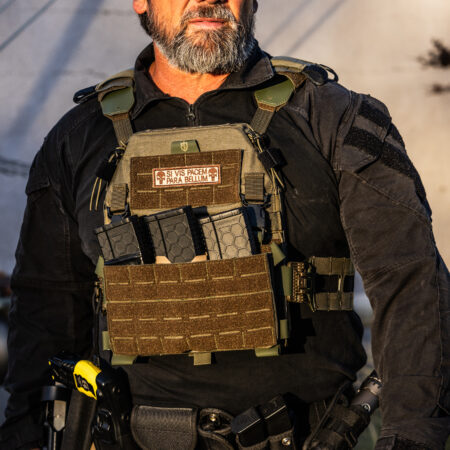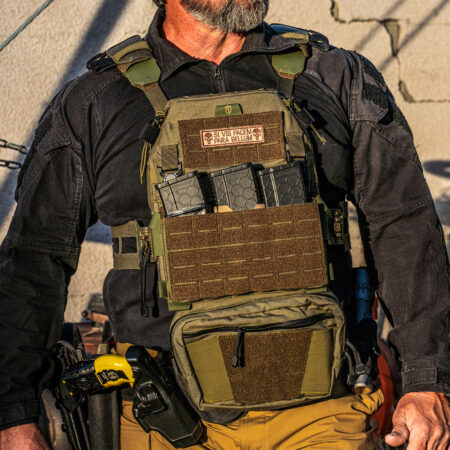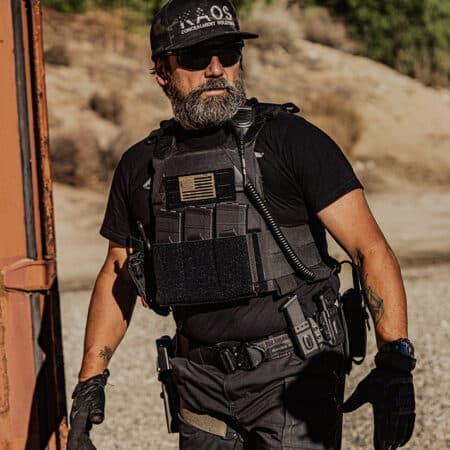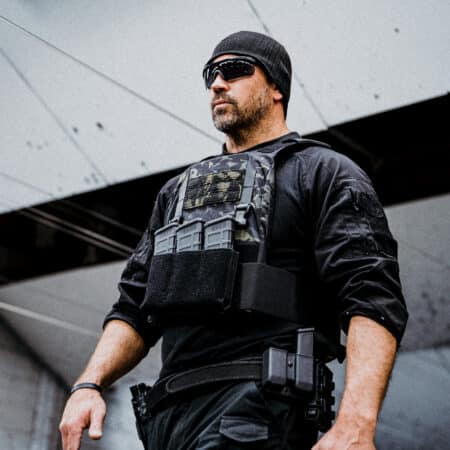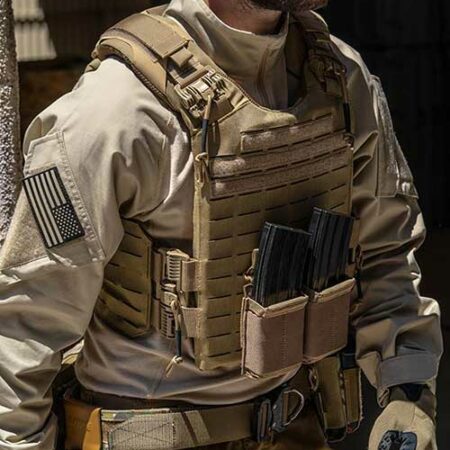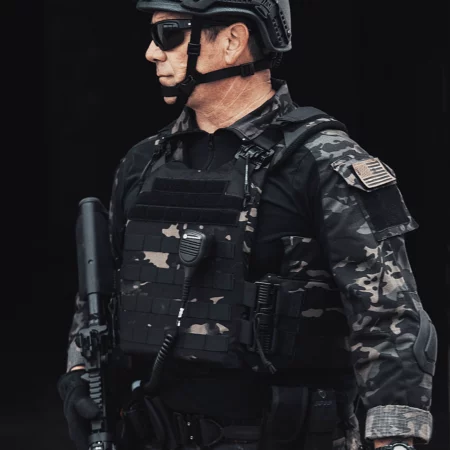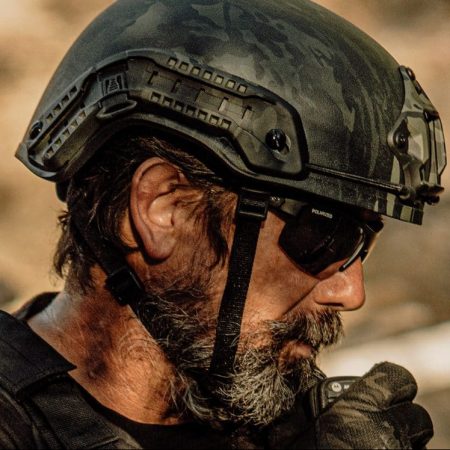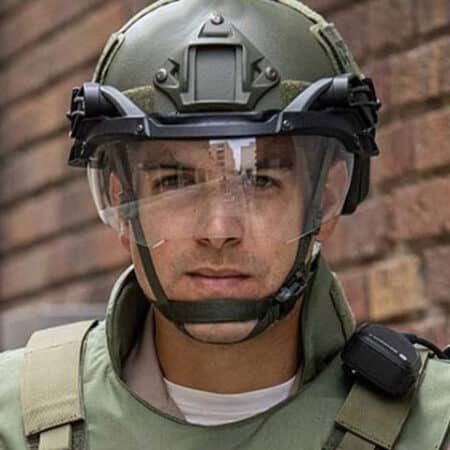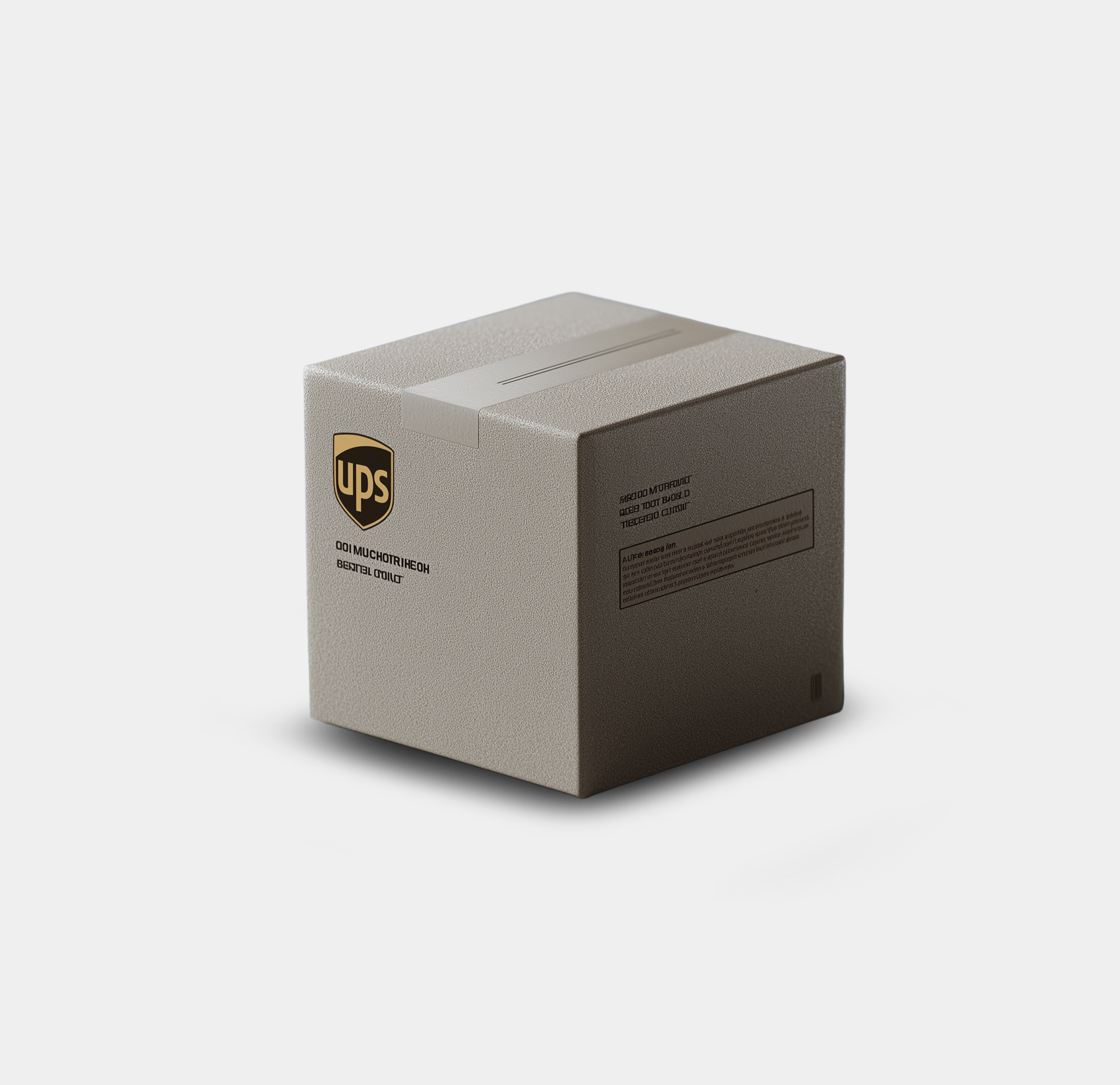In today’s uncertain world, where people are more divided than ever, violence is on the rise, and governments are constantly failing to protect the lives and liberties of their people, there is one thing that remains true: you need to be a capable and formidable force, competent enough to defend yourself, your family, and the values you stand for. Today we will talk about NIJ Certified Hard Armor.
The choices you make now can mean the difference between life and death, especially when it comes to defensive tactical gear. You need one that you can trust, and In the United States, the best way to ensure the quality of body armor is to look for an NIJ certification. Regardless of whether you need them for your plate carrier or to up-armor your bulletproof vest with ICW plates for rifle protection – choosing NIJ certified plate is always a reasonable move.
So, we’ve designed a detailed buying guide to help you choose the right NIJ-certified Hard Armor Plates for your needs.
Basics of Hard Armor NIJ Certification
The National Institute of Justice sets the industry standards for manufacturing and testing of personal protection equipment according to the NIJ Standard-0101.06. Manufacturers must meet these rigorous quality assurance and testing standards to receive the NIJ certification.
Additionally, the NIJ standards specify multiple levels of ballistic protection, For instance, these standards indicate that a certain level of NIJ-certified protective inserts have to stop a certain number of shots from a certain caliber at a specified range. This creates uniformity in the market and allows you to have a clear understanding of the limits of your protective gear.

LEVEL 3++ NIJ CERTIFIED ARMOR PLATE
✔ Advanced Level 3++ Protection
- Swimmers Cut 10×12 Armor Plate: This isn’t just any armor plate. Offering superior ballistic protection, our plate not only meets but surpasses Level 3 standards.
- Defense Against a Range of Threats: Prepared to protect you against 6 specific rifle-caliber shots including:
- 7.62x51mm M80 ball
- 7.62 x 39mm M67,
- 7.62 x 39mm MSC,
- 5.56 × 45mm SS109 / M855,
- 5.56 x 45mm M193, and other high-velocity projectiles.
✔ Superior Ballistic Performance
- Lightweight – only 4.6 lbs and 1.2″ thin
- Our armor plate proudly upholds the benchmarks set by the National Institute of Justice (NIJ) – NIJ 0101.06. This indicates that experts have tested and verified it to offer a specified level of protection against various ballistic threats at set velocities.
✔ NIJ Certified Assurance
- Quality and Durability: Constructed with top-of-the-line materials, our Level 3++ NIJ CERTIFIED 10×12 Armor Plates promise robustness and resilience. Designers construct them for long-lasting performance in the most challenging conditions, making them an indispensable tool for dedicated professionals.
Determining Your Hard Armor Needs
“The first step to choosing the right NIJ-certified body armor for your defensive needs is to understand your defensive needs.”
Risk Assessment
What is the primary objective of owning armor panels? To provide ballistic protection. The first thing to consider when understanding your defensive needs is the threats you are likely to face.
Firstly, define the situations in which you intend to use your armor. Then you can easily identify the threats you will face in those situations. In a broad sense, you need to identify whether you are more likely to face handgun threats or rifle threats. Soft and flexible panels can stop handgun threats, while a heavier and stronger composite plate is necessary to stop rifle threats. We encourage you to read more about NIJ Levels of Protection in our blog article.
Once you have determined the threat you are more likely to face, you can choose the protection that offers the corresponding NIJ level of protection.
Physical Comfort & Mobility of Hard Armor Plates
Though the primary purpose of body armor is ballistic protection, it can only provide it if it is comfortable enough to wear without adversely affecting your mobility.
Start by considering your physique. This will help you understand which size plate you need for optimal coverage and protection. A comfortable armor plate should cover all of your vital organs, without causing discomfort by stabbing into your armpits, or digging into your legs when you sit down. You should also use armor plates with a comfortable plate carrier that holds the plates securely and prevents them from shifting around.
Weight is also an important consideration when it comes to comfort. Ideally, you want plates that are lightweight and offer your required level of ballistic protection.
Hard Armor Purpose & Usage
Understanding the role in which you intend to use your plates can help you answer a lot of questions. If you are in law enforcement or the military, you will probably have to wear it all day, therefore, you would want to prefer comfort. As a civilian, you may want something that is budget-friendly and has a long shelf life. Different use cases present various complications that you must consider if you want the best NIJ-certified plates.
Decoding NIJ Armor Levels
The NIJ specifies the following levels of protection for body armor in the US.
- NIJ Level II – Stops pistol threats up to a 9mm or .357 Magnum
- NIJ Level IIIA – Stops most pistol threats up to a .44 Magnum
- NIJ Level III – Stops rifle threats up to a .308 Winchester
- NIJ Level IV – Stops Armor Piercing rifle threats up to a 30.06
Many manufacturers use also Level 3+ and 3++ terms. It is not recognized by NIJ but you can find it listed as a Special Threat category. Ace Link Armor offers phenomenal NIJ Certified Plate Level 3++ that weighs only 4.9lbs and stops multiple rounds of M855 Green Tip or 7.62×39 MSC caliber! This and more armor plate options are available in our Armor Plates category section.
All of these levels have their distinct pros and cons and have their ideal use cases. Ballistic Manufacturers make Level II armor from soft and flexible Aramid Fibers. It is very lightweight, easily concealable, and comfortable to wear, however, it only stops intermediate pistol calibers and doesn’t have the best multi-hit performance.
Level IIIA armor is available in both soft Aramid panels and hard armor plates. It stops almost all pistol calibers and is suitable for concealable lightweight setups as well. Level IIIA can protect against multiple hits from Magnum pistol cartridges.
Level III Armor Plates and Level IV Hard Armor offer protection against rifle rounds. They are only available in the form of hard armor plates, and their weight largely depends upon the materials used for their manufacturing. They are heavier than smaller levels, and are harder to conceal, but offer far superior protection.
Hard Armor Materials & Construction
To choose the ideal NIJ certified panel, you should also know about the different materials used in their construction, and what kind of benefits and drawbacks they present. Based on construction materials, there are four popular kinds of hard armor plates:
- Polyethylene (UHMWPE) Armor
- Ceramic Armor
- Steel Armor
- Hybrid Armor
Polyethylene or Aramid vest armor panels are the lightest, and the most comfortable. They also tend to be more expensive and offer limited protection, level III at most. Steel plates are the most affordable, however, they are also the heaviest and present the risk of spalling. Ceramic armor offers a good middle ground in terms of price and offers excellent protection. Lastly, we have Hybrid plates, or composite plates which are made by combining multiple materials. Most level IV plates have a Hybrid construction, with a ceramic strike face, and aramid backing to control the deformation.
Apart from the materials, the shape and profile of the ballistic plates are another important consideration. Here are the common shapes offered by most manufacturers.
- Rectangular panels
- Custom shape panel inserts
- Shooters cut plates
- Swimmer-cut armor plates
Some manufacturers, including Ace Link Armor, also offer Multi Curve Hard armor plates. These plates are designed with curves that fit the natural contours of the human body, resulting in a more comfortable plate that allows improved mobility.
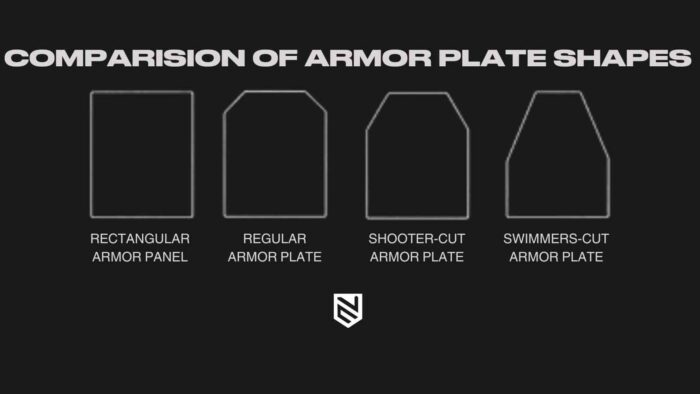
Consider the Armor’s Shelf Life
The life span of NIJ-certified hard armor plates is even 10 years. However, several factors can deteriorate or improve your armor plate’s life. These factors include construction materials and quality, how well the plate is maintained, and what level of wear and tear it has experienced.
Most manufacturers set an expiration date for the armor they make, and you should make sure that the plates you use aren’t expired. Armor plates that have exceeded their shelf life can’t be trusted for reliable ballistic protection and should be replaced. At Ace Link Armor, we offer a 5-year warranty period for Hard Armor Plates and even 8 years for Soft Armor Panels.
Additional Features and Accessories
Moving on, there are several additional features that you should look out for when buying NIJ hard body armor.
Multi-hit capability
First off, let’s talk about multi-hit capability. Any reliable and effective hard armor plate needs to be able to protect you against multiple hits. NIJ-certified armor plates are tested to stop six rounds of the testing caliber, which is the highest caliber that that level of armor can stop. NIJ-certified plates have a decent Multi-hit capability; however, some manufacturers, like Ace Link armor, make plates with a much better Multi-hit capability.
Trauma pads for reducing backface deformation risks.
Even if an armor plate stops a bullet, a lot of force can be transferred to the body, especially in the case of high-caliber rifle rounds. This force can sometimes be enough to cause bruising, and even break ribs. However, it can be mitigated by choosing armor plates that have built-in trauma pads, that reduce backface deformation and decrease the force transferred to your body.
Coatings for mitigating spall and fragmentation.
Spalling and fragmentation are major concerns when using steel armor plates for protection. When bullets hit these steel plates, they can shatter, ricochet towards the wearer, and the people around them. Spalling can be very dangerous, and to prevent it, steel plates usually have a rubber-like coating, which catches the bullet fragments, some steel plates may also have Aramid liners for the same purpose. So, if you are buying a steel armor plate, make sure it has the proper coating to prevent spalling or choose Ceramic Armor Plates – composite panels that do not pose a risk of spalling and are much lighter compared to steel competitors.
Plate carriers and comfort-enhancing features.
You will also need to invest in a comfortable and reliable plate carrier. Plate carriers can have padded backs, and shoulder straps for improved comfort, and some may even have mesh liners, which improve airflow between your body and the armor plates, resulting in a much more comfortable wearing experience.
Price & Budget
Armor plates are available at a wide price range, you can find some cheap uncertified plates and you can also find high-end, super lightweight plates that can be extremally expensive. Ideally, you should stay clear of plates from unknown companies. Your armor plates are an investment into your safety, and you don’t want armor that will fail you in a life-or-death situation.
Here are some of the main factors that may contribute to the price of armor plates.
Materials:
The price of armor plates is greatly affected by the materials used to make them. Steel plates tend to be the cheapest, but they are heavy. Lightweight PE plates are typically the most expensive, with ceramic and composite plates holding a good middle ground.
Protection level
The higher the protection level, the more materials are usually required for construction. This is why plates with higher protection levels tend to have a higher price.
Certification and testing
To get an NIJ certification, Body Armor Manufacturers have to pay additional fees and put more resources into rigorous testing. This adds to the overall cost as well.
Design features
Some armor plates can have additional design features like trauma pads, and multi-Curve designs. These design features usually come at a premium and can increase the price of Armor Plates.
Brand recognition
Lastly, brand name also plays a part in the pricing of body armor. Certain name brands with a high reputation in the market may charge extra for their plates. However, at Ace Link Armor, you can get high-quality Certified Armor plates at a very reasonable price.
Product Comparison NIJ certified vs. tested
Legal Considerations
Many first-time buyers have a lot of questions about the legality of owning and wearing body armor. Well, in the US, according to Federal Law, there are no restrictions on the purchase and use of body armor for law-abiding citizens above the age of 18 years. This means that in most parts of the US, you can legally purchase and wear body armor without any legal problems if you haven’t been convicted of a felony. However, some states and local Authorities can have some restrictions that you should know about.
For instance, States like Connecticut, New York, and Washington have laws that either restrict civilian ownership of body armor or require individuals to obtain a permit to purchase it. Some local governments may also restrict the places where body armor can be worn, like in schools, government buildings, and public events like parades and festivals.
Convicted felons can also wear body armor if their job requires it, however, they need a written statement from the employer to do so.
Conclusion
So, in conclusion, when you are buying hard armor plates, look for NIJ certifications, independent lab data, and choose the plates that are suitable for your specific defensive needs. When it comes to safety and personal protection, there should be no compromise, and we hope that the contents of this post help you make an educated decision.



